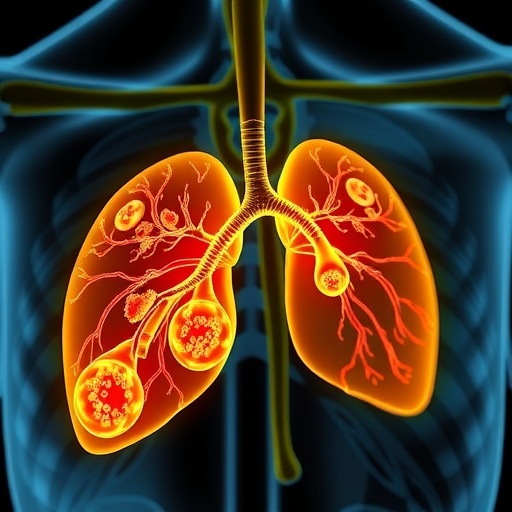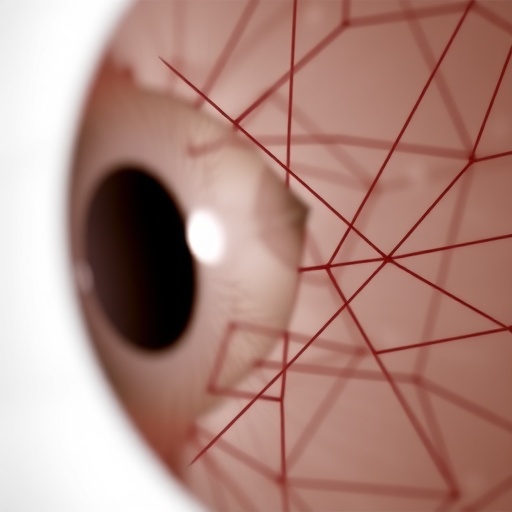In a groundbreaking advancement in the field of organ transplantation, researchers at UCLA have uncovered critical molecular players that serve as “protective switches” within the liver, guarding it against damage during the vulnerable window when blood supply is re-established following transplantation. This damage, medically referred to as ischemia-reperfusion injury (IRI), is a major challenge that jeopardizes the success of liver transplants globally and limits the availability of viable donor organs.
Ischemia-reperfusion injury occurs when the liver remains deprived of blood during surgical removal and transportation, only to be suddenly reperfused once transplanted into the recipient. This abrupt restoration of blood flow triggers a cascade of inflammatory responses and oxidative stress, ultimately damaging liver cells and impairing organ functionality. Despite advances in surgical techniques, IRI continues to contribute significantly to organ rejection and post-surgical complications, limiting donor organ usability.
The UCLA research team, led by Dr. Kenneth J. Dery, has focused on dissecting the molecular machinery that might be harnessed to shield the liver during this critical phase. Their studies, conducted primarily in mouse models of liver transplantation, reveal that two proteins—CEACAM1 and Human Antigen R (HuR)—work in concert as protective regulators. These proteins effectively modulate cellular responses during ischemic stress, suppressing inflammatory signals and promoting liver resilience.
CEACAM1, or carcinoembryonic antigen-related cell adhesion molecule 1, had previously been implicated by the researchers as a key mediator in reducing liver injury during transplantation. The latest findings expand this understanding by implicating HuR, an RNA-binding protein, which posttranscriptionally controls the expression of CEACAM1 by interacting with its 3′ untranslated region (3′UTR). This interaction stabilizes CEACAM1 messenger RNA, allowing for increased production of the protective protein precisely when the liver is under attack from reperfusion-induced sterile inflammation.
Using sophisticated RNA-modulating techniques, the team demonstrated that enhancing the activity of HuR and CEACAM1 significantly mitigates the damaging inflammatory cascade during reperfusion. By artificially boosting these molecular switches, the mice showed markedly reduced hepatic injury, pointing to a promising therapeutic pathway that could be translated into clinical treatments aimed at preconditioning or protecting donor livers.
Furthermore, the scientists extended their observations beyond the murine model by examining human livers deemed unsuitable for transplantation. Strikingly, the molecular dynamics between HuR and CEACAM1 mirrored those discovered in mice, suggesting that these proteins play a conserved, vital role in combating liver inflammation across species. This cross-species validity opens opportunities for the development of novel pharmaceutical agents or gene therapies that could “turn on” these protective pathways in human donor organs, thereby increasing the number of livers safe for transplant.
The implications of this study cannot be overstated. Current liver transplantation is plagued by a severe shortage of viable donor organs, leading to high mortality rates among patients on waiting lists. Many donor livers are discarded due to concerns about ischemic damage, limiting the donor pool and thwarting lifesaving interventions. By strengthening the liver’s intrinsic protective mechanisms, the UCLA team envisions a future where marginal or suboptimal organs can be rescued and safely utilized.
Nevertheless, the researchers urge careful interpretation of their findings. Their experimental methods primarily involved genetic deletion of HuR in animal models, a strategy that may not fully replicate the complexity of human physiology. Hence, while the fundamental biology appears promising, further rigorous testing is essential, particularly within systems that faithfully mimic human organ transplantation.
Looking ahead, Dr. Dery and collaborators plan to employ ex vivo perfusion platforms—technologies that keep donor livers alive and functional outside the body—to test whether activating HuR and CEACAM1 pathways can preemptively fortify human organs before implantation. This approach not only offers a controlled environment for therapeutic intervention but also has the potential to revolutionize organ preservation practices.
The collaborative research effort draws on the expertise of a multidisciplinary team, including molecular biologists, transplant surgeons, and immunologists from UCLA. Their integrated approach, combining experimental biology with clinical insights, exemplifies the cutting-edge translational science aiming to resolve one of transplantation medicine’s most daunting problems.
Funding from authoritative bodies such as the National Institutes of Health and the National Science Foundation has been crucial in supporting this innovative research. The study’s publication in the peer-reviewed journal JCI Insight ensures that it meets the highest scientific standards and invites the global medical community to explore and build on these findings.
Ultimately, the identification of HuR and CEACAM1 as liver-protective molecular switches illuminates a new frontier in organ transplantation. By targeting the posttranscriptional regulation of key protective proteins, future therapies may drastically reduce hepatic ischemia-reperfusion injury, prolong graft survival, and expand the donor organ pool. Such advances offer hope for transforming transplantation outcomes, saving numerous lives worldwide, and diminishing the devastating impact of liver failure.
Subject of Research: Animal tissue samples
Article Title: Posttranscriptional control of hepatic CEACAM1 3′UTR by human antigen R (HuR) mitigates sterile liver inflammation
News Publication Date: 23-Sep-2025
Web References:
https://insight.jci.org/articles/view/194227
http://dx.doi.org/10.1172/jci.insight.194227
References: Publication available in JCI Insight, 23 September 2025.
Keywords: Organ transplantation, Liver damage, Protein functions, Blood flow, Liver, Animal anatomy, Human anatomy, Organ donation
Tags: advancements in transplant medicineCEACAM1 and HuR proteinsdonor organ viability improvementinflammatory response in liver injuryischemia-reperfusion injury solutionsliver transplantation researchmolecular mechanisms in liver healthorgan transplant complicationsoxidative stress in liver transplantsprotecting transplanted organsprotective switches in liverUCLA liver research breakthroughs





